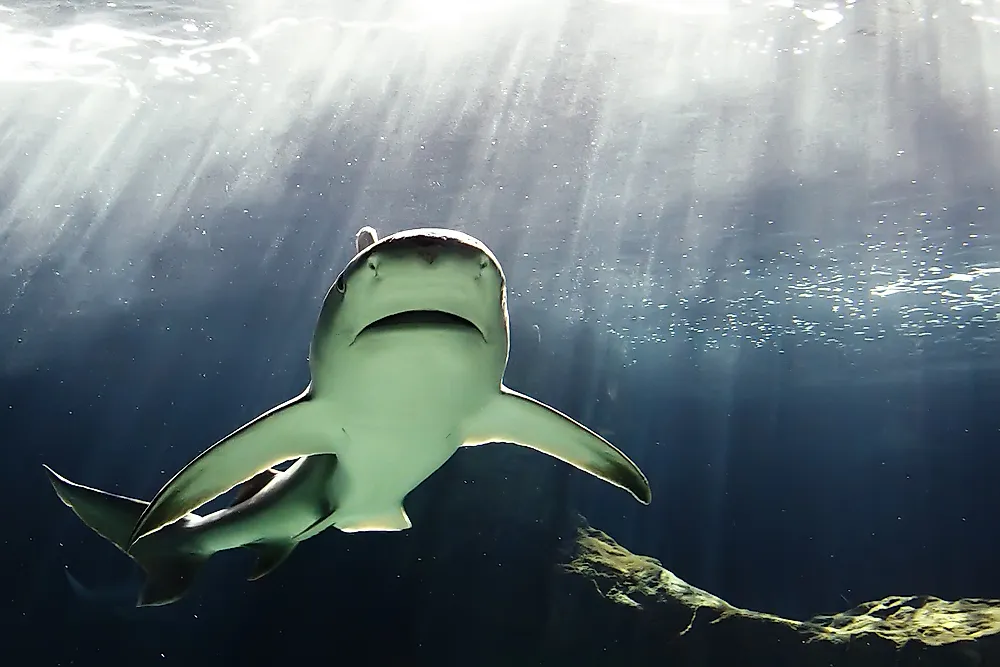List of Euryhaline Organisms

Euryhaline organisms survive in a range of salinity. These organisms thrive in saltwater, freshwater, and brackish water. Euryhaline organisms have a unique osmoregulation feature that enables them to survive in environments of different salinity. These organisms can, therefore, regulate the water content in their bodies irrespective of the salinity of water in its habitat. Habitats of a euryhaline organism are tide pools and estuaries where salinities changes from time to time. An example of such an organism is the Atlantic Stingray.
Stenohaline organisms are the direct opposite of the euryhaline ones because they survive in specific salinities only. Most of the freshwater organism dies in seawaters.
4 Euryhaline Organisms
1. Atlantic stingray (Dasyatis Sabina)
This organism is in the Animalia kingdom, stingray species from the family Dasyatidae. This organism inhabits freshwater and brackish water of the Atlantic coast of North America. The Atlantic Stingray tolerates varying salinities as they have been found in freshwaters of rivers: Pontchartrain, Mississippi and St. Johns found in Florida.
This stingray inhabits shallow sandy waters of the coast, lakes, and actuaries with temperatures of 15-30 ◦C. This explains the reason as to why they frequently migrate to warmer temperatures.
2. Bull shark (Carcharhinus leucas)
Also referred to as the Zambezi shark, Bull shark is found in warm waters worldwide. This big and aggressive shark is found in fresh and salt water. This shark is often found in a depth of 150m. It is found in the Indian Ocean and on the Atlantic coast.
Bull shark can swim from salt to fresh water with ease because it is diadromous. They feed on small sharks and bony fish. The bull shark exhibits a different osmoregulation feature from other members of its class for their ability to regulate the water content in their bodies even from fresh waters.
3. Green chromide (Etroplus suratensis)
The scientific name of Green chromide fish is Estroplus suratensis and it is of the cichlid species. This fish is found in the brackish and fresh waters of Sri Lanka and southern India. The species has also been introduced in estuaries in Singapore. Green chromide is grey-green in color and is of oval shape with and a short snout.
This fish feeds on aquatic plants, diatoms, mollusc, and animal matter. This type of fish is consumable and its popularity is thought to increase in the future because it is used as food.
4. Mummichog (Fundulus heteroclitus)
Mummichog is a killifish found in the Atlantic coast of the US and Canada. That is the reason it is a time referred to as the Atlantic killifish. Mummies inhabit estuaries, brackish water, and salt marshes. This species is popular for its hardiness, the ability to survive in different salinities, and temperatures ranging 6-35 ◦C. This species of fish can also tolerate very low oxygen levels of up to 1mg/L. Mummichog is densely populated and lives in large shoals.
Conclusion
The unique feature with the euryhaline organisms is the ability to osmoregulate in different salinities. Either in salt, brackish or fresh water, euryhaline organisms control the water content in their bodies. This feature of universal osmoregulation is not found in the stenohaline organisms that can only regulate their water content in specific salinities.
List of Euryhaline Organisms
| Rank | Common Name | Scientific Name |
|---|---|---|
| 1 | Atlantic Stingray | Dasyatis sabina |
| 2 | Bull shark | Carcharhinus leucas |
| 3 | Green chromide | Etroplus suratensis |
| 4 | Mummichog | Fundulus heteroclitus |
| 5 | Salmon | Salmonidae |
| 6 | Striped bass | Morone saxatilis |
| 7 | Sturgeon | Acipenseridae |
| 8 | Tilapia | Oreochromis |
| 9 | Asian sea bass | Lates calcarifer |
| 10 | Mangrove red snapper | Lutjanus argentimaculatus |
| 11 | White perch | Morone americana |
| 12 | Desert pupfish | Cyprinodon macularius |
| 13 | Green sea urchin | Strongylocentrotus droebachiensis |
| 14 | Lagoon cockle | Cerastoderma glaucum |
| 15 | New Zealand Mud Snail | Potamopyrgus antipodarum |
| 16 | Diamondback Terrapin | Malaclemys terrapin |
| 17 | Crab-eating frog | Fejervarya cancrivora |
| 18 | Shore crab | Carcinus maenas |
| 19 | Asian shore crab | Hemigrapsus sanguineus |











